Britpop, Blair, Cool Cymru and 25 Years since Knebworth
Neil Collins
‘This is history, this is history! Right here, right now, this is history…”
Those were the words of Noel Gallagher as he entered the stage for Oasis’ second night at Knebworth 25 years ago. Never a man short of a confidence, he had assumed a Christ-like pose while soaking up the adoration at his beloved Maine Road only a few months earlier.
Yet beneath the bravado this time, there was a hint of incredulity. After all, it hadn’t been that long since Noel took control of his younger sibling Liam’s rudderless Rain outfit and morphed them into Oasis. Songs that were written in Burnage while on the dole became the backbone of Definitely Maybe and (What’s the Story) Morning Glory?
Fast-forward to August 1996, and every word of the songs he had crafted in such humble surroundings were sung back to him verbatim as 250,000 fans swarmed like ants onto the grounds of the Hertfordshire stately home. Oasis may have lost the Beatles vs Stones-like battle for No.1 in the UK singles chart to Blur the previous summer, but the irony of winning the war at a country house wouldn’t have been lost on them.
Another nemesis of the Gallagher brothers was Robbie Williams. The ‘fat dancer out of Take That’ will have undoubtedly relished his moment in the sun when he went one better with a third night at Knebworth in August 2003. Yet, it was Oasis’ shows that live longest in the memory and provide the peak of the cultural behemoth known as Britpop.
If performing a pair of warm-up gigs in front of 90,000 at Loch Lomond a week before hadn’t been impressive enough, the stats surrounding Knebworth were jaw-dropping. A staggering 2.5 million applied for tickets – one in 20 people and 4% of the population. Over 3,000 crew helped stage the event, and there was a rumoured guestlist of 7,000. Most mind-blowing though was that demand was so huge that Oasis could’ve sold out a further 18 nights.
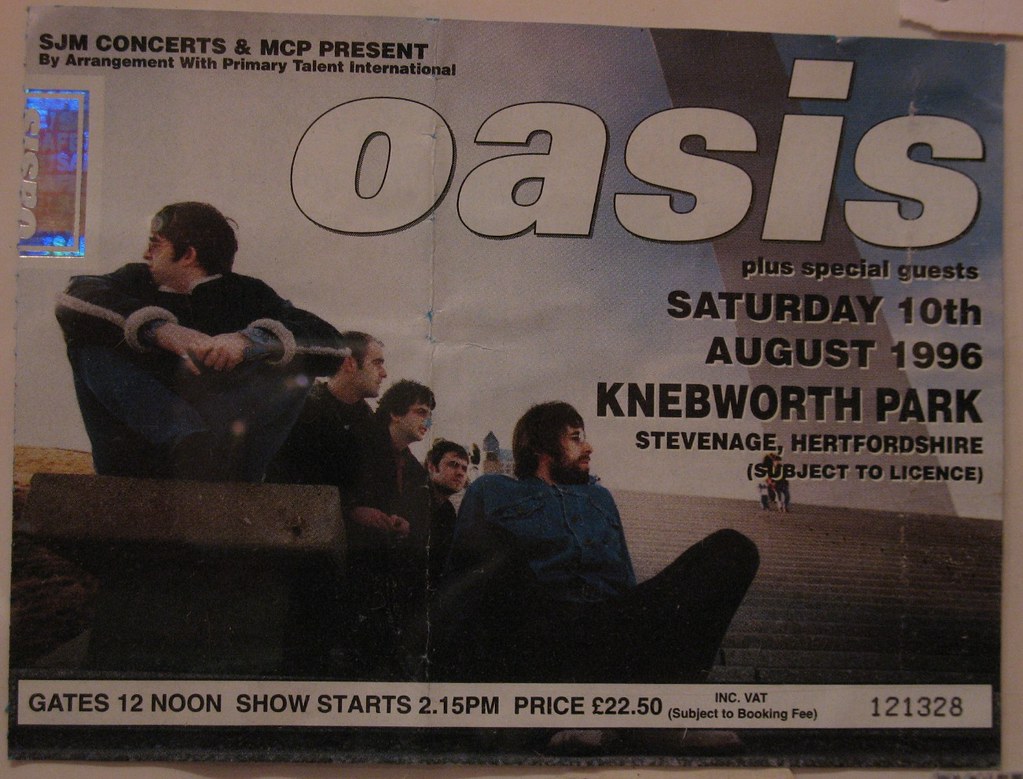
Following mid-afternoon singalongs provided by The Bootleg Beatles, the support bill featured The Prodigy, Cast, The Chemical Brothers, The Charlatans and Kula Shaker. Also warming up the thousands were the Manic Street Preachers. The Blackwood band had agonised whether they could continue following the tragic disappearance of Richey Edwards, and modestly entered the live circuit again as support on Oasis’ UK tour. Announcing a new melodic direction, the Manics began making waves into the mainstream with a newfound commercial allure following the critical acclaim of their bleak magnum opus, The Holy Bible.
Battles would soon rage amongst the Manics old guard support decked in feather boas and leopard print against the casual wear of new fandom. Yet, both camps would end up featuring obsessives that few other bands could match. Emerging under the lights at Wembley Arena in December 1995, a nervous Nicky Wire’s greeting of ‘It’s only us’ both captured the indifference of the Stone Roses fans and acknowledged the Manics devotees, who had made the pilgrimage to London just to see their support slot.
Subversive
Starting with Stay Beautiful in July 1991, every one of the Manics’ subsequent singles would hit the Top 40 until Some Kind of Nothingness in December 2010 – an incredible run for such a subversive band. The widescreen melancholia of Everything Must Go would later win Best Album at the NME and BRIT Awards, and was only kept off No.1 by George Michael’s first album in six years with Older. Likewise, A Design for Life narrowly missed out on top spot to Mark Morrison’s Return of the Mack by 7,000 copies.
Following in the footsteps of New Order after the death of Ian Curtis, the Manics likewise adopted a non-image after Richey’s disappearance. They may now have been dressed like any other Britpop band, but the way they returned from suffering such trauma with quiet dignity – and arguably the best album of their career – was admirable to say the least. Thankfully, Nicky Wire emerged from purdah at Cardiff International Arena in December 1996 where he declared of his Britpop contemporaries: ‘If any of you out there own any Ocean Colour Scene or Kula Shaker records, burn the f**kers!’
So how could a band who prided itself on being a mess of eyeliner and spray paint, and who spat out Plath and Pinter be considered Britpop? In its most reductive sense, Britpop was a movement obsessed with recreating the past – more specifically, the 1960s. As David Stubbs said in 1996 and the End of History: ‘1996 was a year in which the country seemed unconsciously to desire to recreate the year 1966 – the year when Britain swung, when the Union flag was commandeered as a hip accessory rather than a symbol of fusty patriotism.
‘Economically buoyant, a world leader in fashion and the arts, with a charismatic Prime Minister who spoke in modernistic, refreshing terms of modernism and white heat, dispelling the complacent fug of years of Tory rule.
‘1966, the year England won the World Cup and the year the Beatles “were about to consolidate their dominant role and blossom into full, glorious colour. In 1996, Tony Blair would be our Harold Wilson, England’s Euro ’96 squad our Cup Winners (playing once more at Wembley) and Oasis would be our Beatles – the one band we had all heard of, who represented the vital, caustic spirit of youth, and whose songs we could all sing along to.’
Critics would decry that anyone in possession of a Beatles songbook and a knowledge of three chords could make it big in the mid-90s. Yet, the frontrunners of Britpop in Oasis, Blur, Pulp, Suede and Supergrass were all great bands. The only thing linking those five groups was their national identity though. In no time a multitude of wholly disparate acts were all corralled as part of the same movement based on the fact they held British passports and played guitars. Even Placebo and Garbage – who only included one band member each born on these isles – were claimed as Britpop.
Of course, Britpop wasn’t a wholesale steal of the 60s. Comparisons with The Beatles were omnipresent for Oasis, but the terrace-like nature of their choruses are actually more akin to Slade, while they were massively inspired by other 70s acts like The Sex Pistols, T-Rex and The Jam.
Likewise, Blur’s links to The Kinks were obvious, but they were also lovers of early Pink Floyd. Suede were Bowie obsessives, and Elastica were enthusiasts for the arty post-punk of Wire.
Meanwhile, the Welsh bands co-opted into the Britpop scene shared equally eclectic inspirations. Gorky’s Zygotic Mynci were disciples of psychedelic icons Syd Barrett and Kevin Ayers, while Super Furry Animals indulged in a myriad of styles from Badfinger and ELO to 10cc and Steely Dan; not forgetting Cian Ciarán’s love of electronic music.
The Manics weren’t in thrall to the 60s either with a glut of influences from the subsequent decades including The Clash, Echo and the Bunnymen, Public Enemy. Their stance at odds with the prevailing movement was summed up best by Richey Edwards in 1994. Speaking to NME’s Stuart Bailie, he acknowledged with withering sarcasm Noel Gallagher’s ability to write such ‘cheerful lyrics’: ‘I would like to be able to write “I’m feeling supersonic, give me gin and tonic”, but I just can’t. I think that’s a brilliant lyric, but I haven’t felt supersonic since I was about 10 years old.’
Modern Life is Rubbish
The origins of Britpop can be found in two key reactions to what was happening in America. As Britain was merged in an anti-melodic shoegaze scene in the early 90s led by My Bloody Valentine, Ride and Slowdive; grunge was exploding across the Atlantic as Nirvana, Pearl Jam and Soundgarden became unlikely poster boys for MTV.
With a timespan generally considered to be 1993-97 (with its peak years being 1994-95), Britpop was the antidote to the doom and gloom of grunge with its emphasis on melody, bright guitars and catchy choruses. It’s easy to point out the relative simplicity and derivative nature of Noel Gallagher’s songwriting, but it spearheaded a positive, feel-good movement about fulfilling dreams. Tunes like Rock ’n’ Roll Star, Some Might Say and Acquiesce are full of euphoria, hope and unity, while Live Forever was written as a reaction to one of Kurt Cobain’s songs. In 2013, he said: ‘I remember Nirvana had a tune called I Hate Myself and Want to Die, and I was like “Well, I’m not fucking having that.”
The potential for American culture to infiltrate British life and become predominant was an even bigger fear for Damon Albarn. When asked in 1993 if Blur were an anti-grunge band, he responded: ‘If punk was about getting rid of hippies, then I’m getting rid of grunge.’
That same year, Blur released their second album Modern Life is Rubbish with lyrics that David Cavanagh in Mojo said captured a ‘poignant humour and Ray Davies characterisation to investigate the dreams, traditions and prejudices of suburban England.’ Where Ray Davies sang of preserving village greens, Blur’s imagery captured aspects of Englishness (not Britishness) that were outdated by the early 90s like the steam train on the cover and greyhound racing for Parklife. Ironically by 1997, American lo-fi bands were influencing the sound of Blur’s self-titled new album. Song 2 was initially a studio jam mimicking the grunge quiet-LOUD dynamic and the ‘Woo-hoo’ chorus line was tacked on as a piss-take along with its demo-like title. Inadvertently, the band had a No.2 hit on their hands.
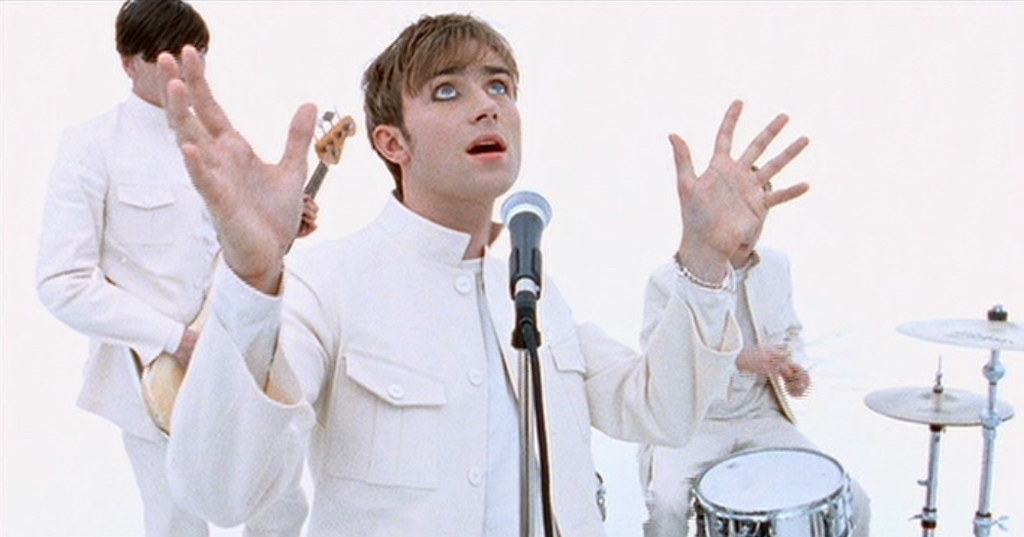
The Manics would find some agreement with Blur about American influence creeping into British life. Elvis Impersonator: Blackpool Pier was a lyric left behind by Richey Edwards, which was completed by Nicky Wire and became the opening track of Everything Must Go. Its message conveyed that Brits would lap up anything American even if it was essentially dead culture and a cheap imitation at that; served up in a faded seaside resort: ‘20ft high on Blackpool promenade / Fake royalty second-hand sequin façade / Limited face paint and dyed black quiff / Overweight and out of date.’
Regardless of accusations of rehashing the past, Blur and the media were banging the drum for Britpop. In John Dowers’ 2003 documentary Live Forever, Alex James even goes as far to claim that whole thing was entirely Damon Albarn’s invention.
In reality, the term had been associated with British pop music of the 60s, glam and punk rock of the 70s and indie pop of the 80s. A collective marketing tool, it came into popular usage in the 90s after Stuart Maconie’s Select front cover story in April 1993 with Brett Anderson posing against a Union Jack backdrop under the headline ‘Yanks Go Home!’
For the next five years, ‘Britpop’ would become inescapable and along with it came a proliferation of Union Jacks. Only a couple of years removed from the furore Morrissey caused cavorting with the flag and skinhead imagery while supporting Madness at Finsbury Park, the British public had seemingly got comfortable again with the associations of its flag. By April 1996, Noel Gallagher was grinding out chords on his Epiphone Union Jack Sheraton, while floods of flags greeted Tony Blair’s arrival at No.10 a year later.
Welsh Music Pre-Cool Cymru
While the country was merged in the ‘Madchester’, shoegaze and baggy scenes, an altogether different beast came blazing a trail out of Blackwood in the perfectly symmetrical quartet of the Manics. The androgynous Glamour Twins of Wire and Edwards looked great flouncing down the wings. Sandwiched in between was the band’s masculine, musical middle propelled by Sean Moore’s underrated drumming behind a snarling Rottweiler in frontman James Dean Bradfield.
With a knack for a cutting soundbite (‘We will always hate Slowdive more than Adolf Hitler’), the Manics even took aim at their own Welsh identity with Richey Edwards labelling the Welsh language ‘dead culture’ and declaring that if Blackwood was a museum ‘it would be full of rubble and shit.’
Thankfully, the Manics are more comfortable and proud of their Welsh roots now, and that’s not to say they ever weren’t. Much of that early rhetoric can be explained away by ambitious, young minds who dreamt big and wanted to break away from the constraints of their hometown.
Yet, it’s hard to believe that the Manics really thought they would sell over 18 million copies of their debut album Generation Terrorists, out-sell Appetite for Destruction, headline several nights at Wembley Stadium and then burn out in a blaze of glory (perhaps literally given their early claim of setting themselves on fire on Top of the Pops).
Their hyperbole had to be outrageous though as Welsh music was dismissed with an utter contempt that wouldn’t be tolerated today. Take for instance the sheer barrage of anti-Welsh headlines they had to contend with in their early days – You Sexy Merthyr Fuckers, Cymru Feel the Noize, LlanfairPG Calling, The Newport Dolls, Guns N’ Daffodils and It Takes an Advance of Millions to Hold Us Bach to name just a few. The NME review for Generation Terrorists was even accompanied by an illustration of a lady in traditional Welsh lady garb spray painting the band’s shirts. It’s no wonder the ‘4 Real’ incident happened.
Record labels weren’t much better. A&R men were reluctant to travel across the Severn Bridge, and there were rumours of Welsh bands driving over to Bristol to send off their recordings there so that parcels would have English post-marks. Even by the mid-90s, Stereophonics were sending out tapes in shoes, food containers and any other packaging that would make it stand out from the pile.
How did it ever get to this point though? Viewed as a caricature land of leeks, sheep and male voice choirs, Wales has always had a lineage of brilliantly diverse music. In 1963, Welsh brothers Kingsley and Charles Ward founded Rockfield which would soon become the first residential studio in the world hosting countless chart-topping acts including Queen, who laid down Bohemian Rhapsody there. The first chart-topping hit recorded at the Monmouthshire studios was Dave Edmunds’ I Hear You Knocking in 1970, while elsewhere fellow Cardiff act Amen Corner had also reached No.1 with (If Paradise is) Half as Nice the year before.
Throughout the 70s, there were Cardiff heavy rock legends Budgie, while Swansea icons Badfinger were a ‘Welsh Beatles’ signed to Apple Records, who deserved to be huge had it not been for their tragic story. Also signed to Apple was Mary Hopkin who reached No.1 in 1968 with Those Were the Days, while the titanic-lunged singers Tom Jones and Shirley Bassey enjoyed massive success over the subsequent decades. There was also the beautifully crafted Welsh language folk songs of Dafydd Iwan, Meic Stevens and Endaf Emlyn starting in the 70s; plus Shakin’ Stevens and Bonnie Tyler became mega-selling popstars throughout the 80s.
Yet, it was the vibrant Welsh language scene of the 80s that was most influential in ushering the success of the 90s boom. Punk icon Rhys Mwyn’s persistence in demanding to see John Peel paid off with the legendary DJ becoming a keen supporter, while writers like David Quantick began reviewing the clutch of great bands. Mwyn’s own band Anhrefn were an uncompromising cocktail of punk spirit, then there was the songwriting match made in heaven of David R Edwards and Patricia Morgan with Datblygu’s off-kilter, Fall-esque rhythms. Elsewhere, there was the experimental and innovative Llwybr Llaethog, while Ffa Coffi Pawb, Y Cyrff, U Thant and Y Crumblowers would all swap members and evolve into two of the best Welsh bands of all time, Super Furry Animals and Catatonia.
Fuzzy Logic
Two Welshmen were instrumental in introducing the Super Furries to the world in the mid-90s. Creation Records A&R man, Mark Bowen had quickly fallen for their charms at an Aberystwyth gig in March 1995, and within months Iestyn George was enthusiastically sharing copies of their debut In Space EP with his NME colleagues.
Bowen realised that this wasn’t just any band, and cajoled Alan McGee to attend their show at the Camden Monarch – only their second outside of Wales. McGee had seen enough already, and the Furries were soon on the coolest label in the country alongside Primal Scream, Teenage Fanclub and Oasis. The Creation head did make the initial error of lumping the Furries in with the rest of the crowd though: ‘I thought I was signing an out-and-out Britpop, Blur kind of band. Little did I know that I was signing The Beach Boys meets Gong meets Isaac Hayes on a f**king acid trip.’
Released on 20 May 1996, Fuzzy Logic reached No.23 and was co-produced by the band with Gorwel Owen at Rockfield shortly after Oasis had completed (What’s the Story) Morning Glory? Featuring the singles Hometown Unicorn and God! Show Me Magic, plus the Top 20 hits Something 4 the Weekend and If You Don’t Want Me to Destroy You; it also included a sleeve by Britpop artist-of-choice, Brian Cannon. His classic covers already adorned Oasis’ Definitely Maybe, Suede’s Dog Man Star and The Verve’s A Northern Soul; but the artwork for Fuzzy Logic is perhaps his most iconic.
Gruff Rhys had sourced a collection of passport photos of the Bridgend-born drug smuggler Howard Marks, who had over 40 aliases during his time at large. Each picture depicted this master of disguise, and when Cannon arranged the shots in a collage across the table, he could envisage a record sleeve that would jump off the shelves. Add into the mix a track called Hangin’ with Howard Marks and Creation’s decision to release Fuzzy Logic at the same time as the autobiography Mr Nice, and the album campaign was off to a flyer.
The Furries faced some scepticism from early supporters, who felt betrayed that the group were now singing in English. At the 1996 Eisteddfod, the band responded by whistling their English language songs. Lyric sheets were handed out in English, Welsh and Japanese, and the audience were encouraged to sing along in whatever language they wanted – a theme explored further on their 1997 single, The International Language of Screaming.
Rejecting inward looking schools of thought, the Furries saw Marks as a progressive, revolutionary icon sharing their own internationalist vision. In Rise of the Super Furry Animals, Ric Rawlins said: ‘They were consciously trying to create what they termed outlaw culture, a reaction against certain notions of Welsh nationalism. This had been cemented in their minds one night when they had visited Cardiff’s music venue Clwb Ifor Bach, which that evening was operating a Welsh-speakers-only door policy.
‘When the gig came to a close and Heather Jones came on to sing Land of My Fathers, they were disheartened to see everyone standing up to sing the national anthem. Says Gruff today, “We made a point to sit down – we’re not interested in any anthem, it’s such an antiquated notion and so exclusive. We’re all about inclusion.”
Similarly, the jingoistic elements of Britpop didn’t sit well with the band, Bassist, Guto Pryce said: ‘Britpop was quite a risible scene. We didn’t like the idea of flag waving and we never waved a Welsh flag – it was other people that told everyone we were Welsh. There was a backlash against that scene – and rightfully so.’
Gruff Rhys further elaborated in an interview with Magnet in 2016: ‘We had a relationship to Britpop in that we were interested in melodic songwriting, but we were politically opposed to it as Welsh speakers, as members of a minority group.
‘We saw it as a conservative, jingoistic movement. There were a few great bands and lots of mediocre bands, but the British media got kind of drunk on it, obsessed with recreating a 1960s-style swinging London. We thought it was a bit one-dimensional and it didn’t fully reflect what was going on musically in Britain.’
Everything Must Go
With both commercial and critical acclaim secured by the late ’90s, the Manics were now in a position to readdress and embrace their Welsh roots without media derision. This especially became the case after the release of their chart-topping, five-million selling record This is My Truth Tell Me Yours in 1998. With a title inspired by an Aneurin Bevan speech, it’s their most quintessentially Welsh album with historical references strewn throughout including Capel Celyn on Ready for Drowning.
Along with this newfound comfort in their national identity came a Welsh dragon, which has been draped across Nicky Wire’s amp ever since. Gruff Rhys even spoke favourably of Wire’s simultaneous use of a feather boa in that it took away the nationalist masculinity often attached to a flag.
Welshness is also at the heart of Everything Must Go, which was released on the very same day as Fuzzy Logic. With a working title of Sounds in the Grass (inspired by a series of paintings by Jackson Pollock), it borrowed its eventual title from the name of a Patrick Jones play. It contained five songs with the lyrics of Richey Edwards and featured four Top 10 singles in A Design for Life, Everything Must Go, Kevin Carter and Australia. The album was dedicated to Tower Colliery in the Cynon Valley where 239 miners led by Tyrone O’Sullivan each pledged £8,000 from their redundancy pay-outs to buy back the mine amid strong UK government resistance.
Central to its success was the lead single A Design for Life – a heart-on-sleeve tribute to working class resilience, it encapsulated everything they had been trying to say since forming in the mid-80s and it could only have been written in Wales.
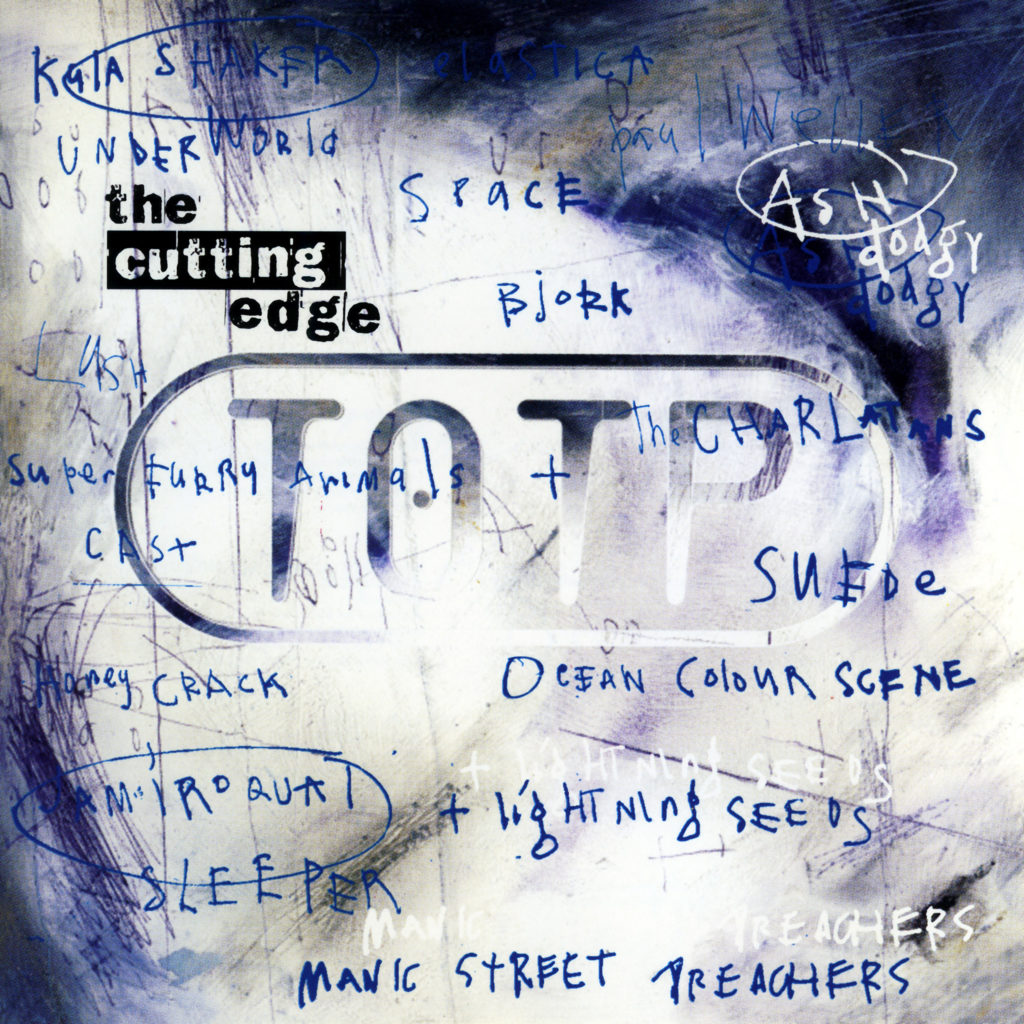
In the summer of 1995, Wire wrote a lyric influenced by Jimmy McGovern containing two potential ideas and spread it across 20 pages of A4. One was The Pure Motive and the other was A Design Life – the latter’s title inspired by Joy Division’s An Ideal for Living EP. Once it was whittled down into one coherent piece and combined with James Dean Bradfield’s Morricone-esque riff, Mike Hedges’ Wall of Sound production, a slogan heavy video and Sean Moore’s drums for the finale; the end result was pure gold.
Part of Wire’s incentive in writing the lyric was a direct response to what he perceived as Blur’s ‘On the Buses’ style class tourism on Boys and Girls, and Jarvis Cocker’s ‘arched eyebrow’ dark wit on Common People. Hilariously, its chorus lines of ‘We don’t talk about love / We only want to get drunk’ were taken at face value by the Manics’ new beer-swilling section of fans.
Proudly illiterate apeman
The self-empowerment of its opening line of was also the antithesis to Liam, Loaded and laddism as Simon Price explained in Everything: “It was a situation not without irony – a band whose forthcoming single would begin “Libraries gave us power” on the same bill as a band whose major songwriter boasted that he never read books. Nicky Wire’s wife and brother both worked in libraries; one suspected that Liam Gallagher would feel out of his depth if a woman told him she was a Libran, never mind a librarian…Nicky had dedicated A Design for Life to Dennis Potter, Dennis Skinner, Arthur Scargill and Antonio Gaudi, and now here he was backslapping with this proudly illiterate apeman, who had probably never made it to the end of an Enid Blyton.
‘Everything the Manics hated about Madchester was true of Oasis: anti-education, anti-intelligence, anti-femininity, anti-glamour, pro-getting wasted. Oasis was a worst case scenario, lowest common denominator cliché of what the working classes can be, encouraged by a southern bourgeois media clearly aroused by a northern bit of rough.’
The Manics themselves were a bit more complimentary. Nicky Wire had listened intently to the uplifting melancholia of Live Forever and Slide Away, and wanted to channel the feeling of hope through sadness onto Everything Must Go. He also admired the Gallagher brothers’ defiant confidence: “I have a concept of a working class rage, which is in some people. It’s in us. It’s in Liam Gallagher, Linford Christie, Nigel Benn and Paul Gascoigne. The desire to prove yourself.’
One of the first trusted lieutenants to be let into the Oasis camp to hear the tapes for (What’s the Story) Morning Glory was James Dean Bradfield, who added: ‘I do think pop stars can be shining heroes. Liam Gallagher wears a suit of armour as far as I’m concerned.’
The Big 3
A week after Fuzzy Logic and Everything Must Go came The Big 3 by 60Ft Dolls, which included a Stateside release on Geffen Records. Preceded by the single Happy Shopper on Hue Williams’ Townhill label in 1994, the razor-sharp debut album didn’t disappoint starting with the break-neck brilliance of New Loafers and also featuring the singles Talk to Me, Pig Valentine, Stay, and Hair.
Recorded at Rockfield, the trio of Richard Parfitt, Mike Cole and Carl Bevan locked in tight together and producer Al Clay perfectly captured the adrenaline-soaked energy of their live shows. The Dolls led an explosive Newport scene in the mid-90s alongside Dub War, Flyscreen and Novocaine, which gained worldwide acclaim when US writer Neil Strauss famously labelled the scene the ‘new Seattle.’
One of their favourite local venues TJ’s also etched its name into rock history. Promoters Cheap Sweaty Fun often hosted American punk and hardcore bands, and it was at a Hole gig where legend has it Kurt Cobain supposedly proposed to Courtney Love. Lashing together classic British influences like The Beatles, Stones, The Who and The Jam, it was actually Parfitt’s love of the lo-fi alt-rockers found at TJ’s like Pavement and Dinosaur Jr that gave the Dolls’ melodies a raucous edge – ‘That was why we didn’t fit the Britpop template, we were just too noisy.’
Way Beyond Blue
There was still time for one more absolute classic Welsh album to be released in 1996, and that arrived with Catatonia’s debut Way Beyond Blue in late September on Blanco y Negro. Recorded with Smiths producer Stephen Street, it was an early greatest hits compilation of sorts with over half of the album previously issued via singles and the For Tinkerbell and Hooked EPs on Rhys Mwyn’s Crai label.
Nevertheless, with pop gems like Lost Cat, Bleed, Dream On and the Top 40 hit You’ve Got a Lot to Answer For; it launched Catatonia to a mainstream BBC Radio 1 audience. When Rhys Mwyn sent a copy to Mark Radcliffe, he gave it airplay due to his exasperation with the deluge of ‘identikit grunge bands and Nirvana-u-likes.’
While Way Beyond Blue was a relative success reaching No.32, Catatonia’s popularity would skyrocket with successive No.1 albums in International Velvet and Equally Cursed and Blessed including huge hits like Mulder and Scully, Road Rage and Dead from the Waist Down. If any more proof was needed that the 90s was an incredible period of growth and confidence for Wales, it was provided in the chorus of International Velvet: “Every day when I wake up, I thank the Lord I’m Welsh.’ Can you imagine Cerys Matthews singing that at the start of the decade?
Things Can Only Get Better?
When the Labour Party swept to a landslide victory in May 1997 soundtracked by D:ream’s Things Can Only Get Better, it was an inspired choice of campaign song. After all, he was a young, charismatic figure who could lead the country into a brighter future following 18 years of crushing Conservative rule. Aged 43, here was a man who promised ‘Education, education, education’, and was seemingly in touch with the youth, British culture and its working class – equally adept on an electric guitar as holding his own in a game of head tennis with Kevin Keegan.
Tony Blair became Labour’s longest serving Prime Minister, and the first and only person to lead the party to three consecutive general election victories. Yet, the Iraq war, sexed up dossiers, weapons of mass destruction and Chilcot have all left lasting scars on his legacy. Does Noel Gallagher regret his wholehearted approval of him at the 1996 BRIT Awards, or is he on the difference side of the political fence altogether now?
Blair is often summoned as a touchstone of the Britpop era, but he was only actually in power for its dying embers. His shaking hands with Noel at No.10 in July 1997 may have provided Cool Britannia with its defining image, but it also signalled the end of the party. As Ric Rawlins said: ‘The music press saw it as a Faustian moment for the Oasis guitarist, who was breaking a taboo by shaking hands with the PM, but for Blair it was a media coup, helping his party look cool and arts-friendly.’
The champers had long gone flat, and the mountains of cocaine had turned to molehills – much of it hoovered up Oasis’ nostrils recording Be Here Now. Its ridiculously bloated length at 70+ minutes burst the Britpop bubble with songs reaching their fourth and fifth choruses, endless guitar solos stacked upon one another and All Around World presumably still going on in a parallel universe.
Ten days after its release, Princess Diana died in Paris. After so many years of cold and inflexible Tory rule, there was a feeling the country would become more liberal and compassionate again. Masses of British people flocked to streets to engage in prolonged mourning, which might have suggested a collectivist reaction to a previous decade when Thatcher had preached individualism and that there was no such thing as society.
Yet, did Britpop really make things better? For a short period yes, but it was the sheer volume of third rate bands that were invited to the party that diluted the whole movement. At the peak of their powers with two classics albums and an incredible body of B-sides at their disposal, many argue Oasis should’ve called it a day after Knebworth.
Mat Whitecross’ 2016 Supersonic documentary starts and finishes there, and guitarist Paul ‘Bonehead’ Arthurs has said it would’ve been the perfect time to call it a day. The fact that huge portions of the audience experienced the gig through screens that didn’t even sync with the sound emanating from the far distant stage indicated the mothership was spiralling out of control before Be Here Now.
By the late 90s, pop acts like The Spice Girls, Boyzone, Westlife, Britney Spears and Backstreet Boys had grasped the mainstream mantle. Indie music moved into a more melancholic and introspective brand of songwriting post-Britpop with Coldplay and Travis. Oasis followed suit with tunes like Gas Panic, Where Did It All Go Wrong and Sunday Morning Call, but its parent album Standing on the Shoulder of Giants in 2000 certainly felt like the inevitable comedown.
Other than a short-lived indie revival in the early noughties featuring the likes of Franz Ferdinand and Razorlight, the UK musical cycle hasn’t yet spun around to another predominant guitar movement since the days of Britpop. As John Harris concluded in his definitive Britpop tome, The Last Party: ‘By 1999, its architects were scattered: cloistered in rural piles, hidden away in rehab, or simply sitting at home, anxiously pondering their next move…At Westminster, some of the Blairites were discovering that there were slightly more pressing matters than the rebranding of Britain…Britpop’s garish colour-scheme had faded – as ever, London was reverting to a cold, damp grey.’
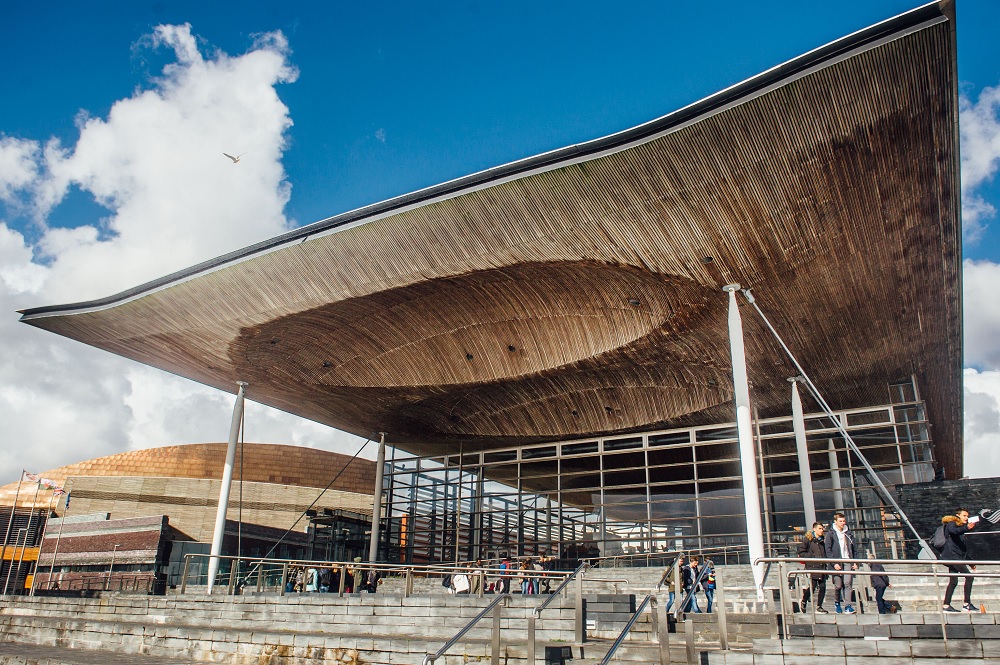
Conversely, Cool Cymru was a huge force for good in Wales that transformed narrow-minded perceptions and put the country on the international map. Not only were the Manics, Phonics, Furries and Catatonia dominating the charts, but Wales was leading the way in other areas too. A Welsh Assembly would at last be created following a ‘Yes’ vote in 1997, while Huw Edwards’ Welsh accent would be heard by the nation on BBC News every night. Heading into the new millennium, 1999 was an incredible year for Wales.
Stereophonics followed up the chart-topping success of Performance and Cocktails by playing to 50,000 at Morfa Stadium, while Catatonia perfomed in front of 30,000 at Margam Park. Before he would become Mr Nice, the Furries’ old band-mate Rhys Ifans became a household name – albeit in his pants in Notting Hill. Plus, Tom Jones returned to No.1 with Reload – a collection of covers featuring the cream of the 90s crop.
There was also Scott Gibbs’ iconic winning try against England in the final minute of a tense affair at Wales’ temporary home of Wembley, before the Millennium Stadium opened to stage the Rugby World Cup. At the same location, the Manics closed out the final seconds of the 90s in style by headlining the biggest indoor arena gig across Europe at the time in front of 57,000. Only a decade before they had played The Square Club across the road to a handful of fans.
In The 90s: What the F*** was that All About?, John Robb summarised: ‘Post-Manics, there is a rumbling volcano of Welsh bands of all different shapes and sizes. Far from being uncool, some bands even flaunt their Welshness – a delicious V-sign to the years of being considered a backwards pop region.
‘By the late 90s, Wales was the centre for guitar bands in the UK. From Catatonia’s blissfully exuberant guitar pop to the Stereophonics’ hook-laden laddish rock, from Super Furry Animals innate indie weirdness to the Manics themselves becoming bigger than ever. Welsh pop was on a glorious high. F***, even Tom Jones and the divine Shirley Bassey – two of the greatest voices to ever come out of the UK – were hip again!’
Heading into the early months of the 21st century, the Super Furries would return with their masterpiece, Mwng – and every single word of it would be in the Welsh language. In the House of Commons, Elfyn Llwyd MP celebrated it as a ‘new wave of confidence in the Welsh nation.’
That confidence instilled from the Cool Cymru era still provides crucial inspiration for the vibrant and diverse music scene across Wales today.
Neil Collins is a writer and co-host of the Welsh Music Podcast
Support our Nation today
For the price of a cup of coffee a month you can help us create an independent, not-for-profit, national news service for the people of Wales, by the people of Wales.



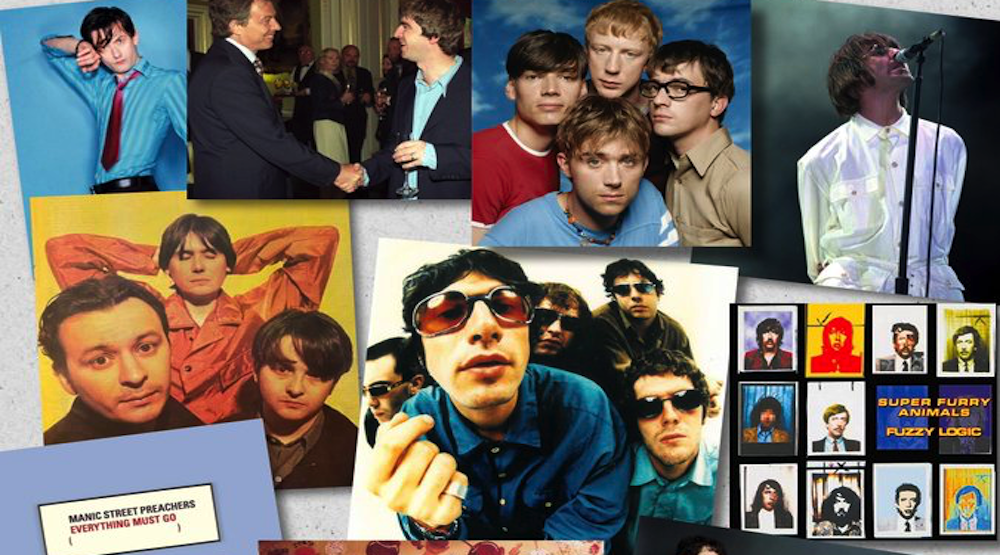
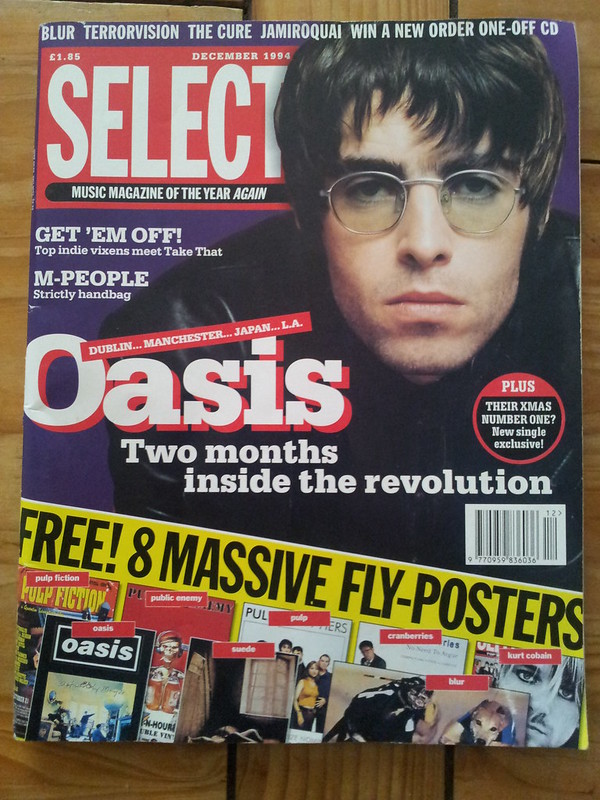
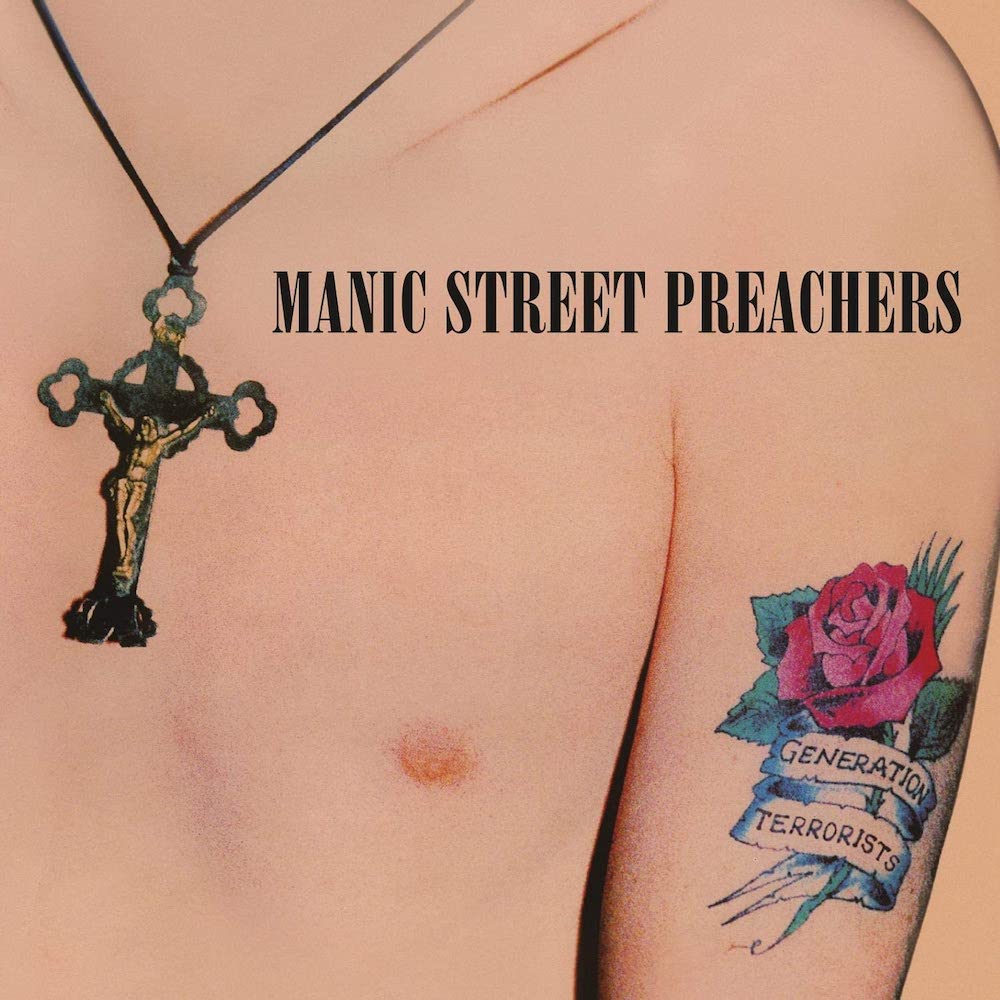
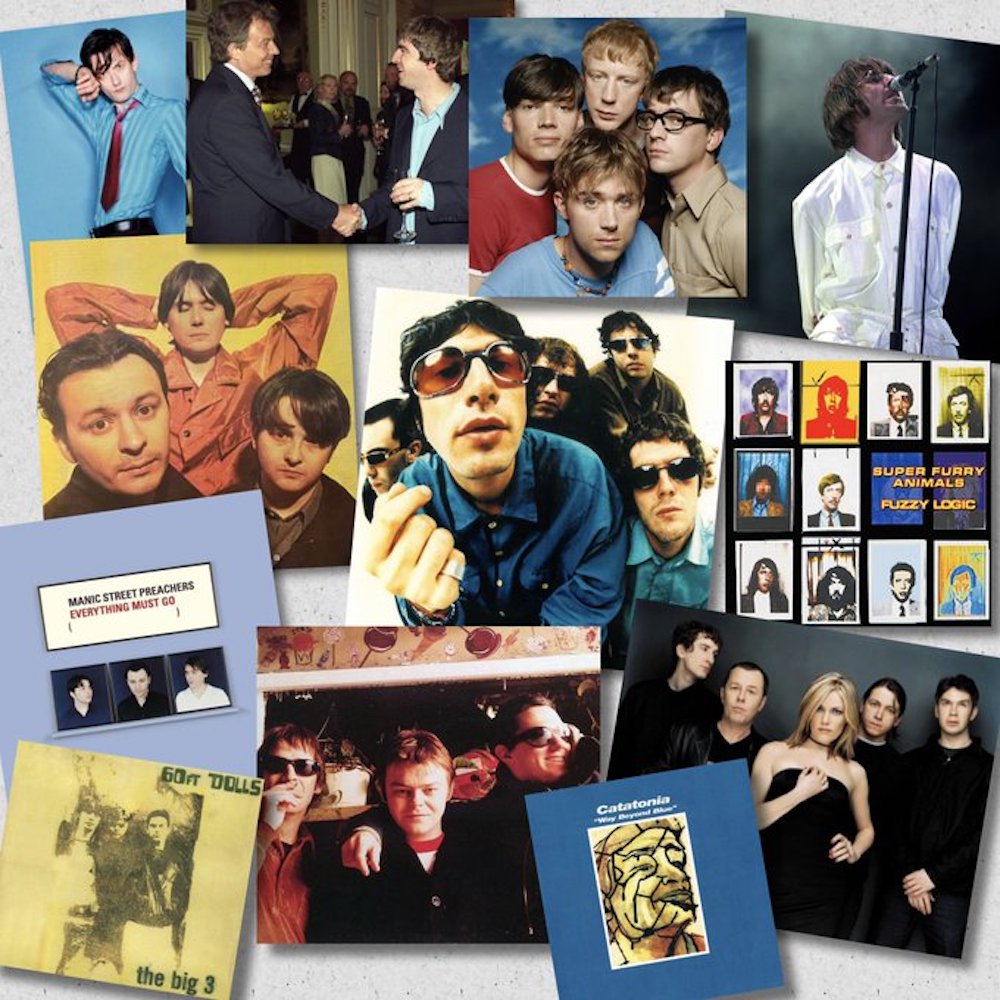
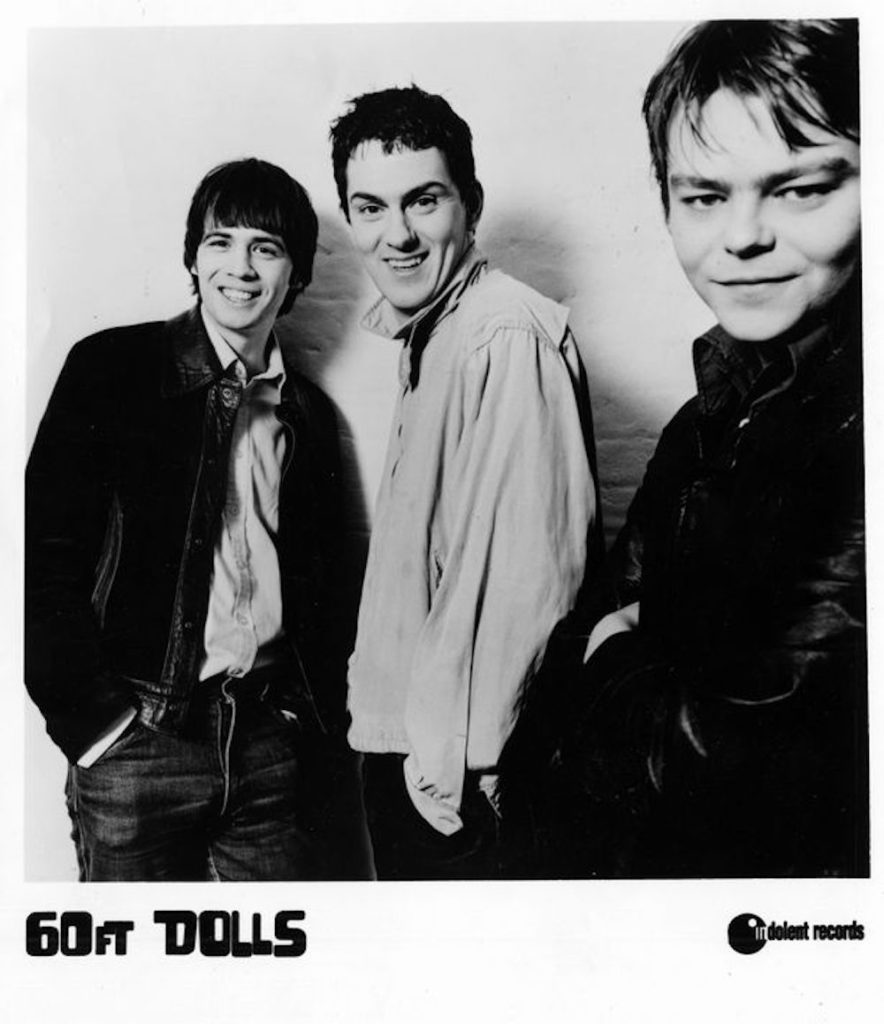
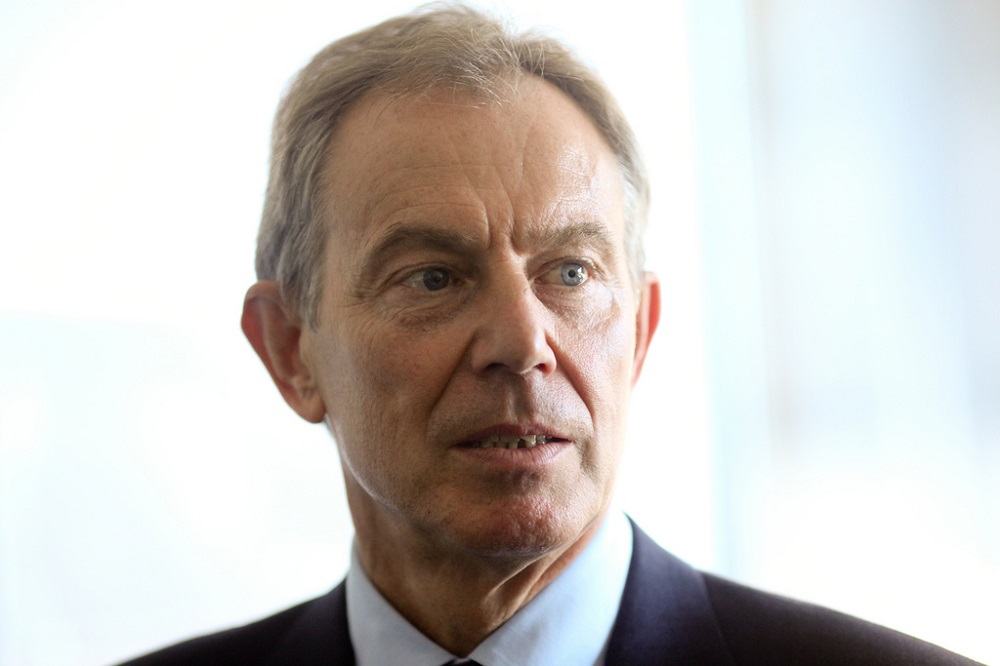



Such a well crafted article. There’s no better way to spend half an hour.
Great article!!!
Excellent article, well written, could relate to most of it !